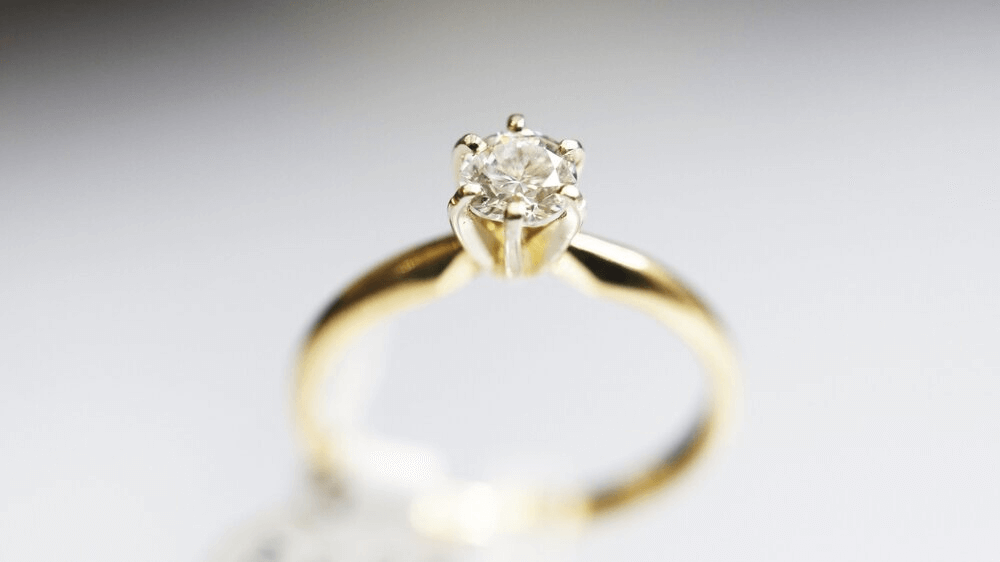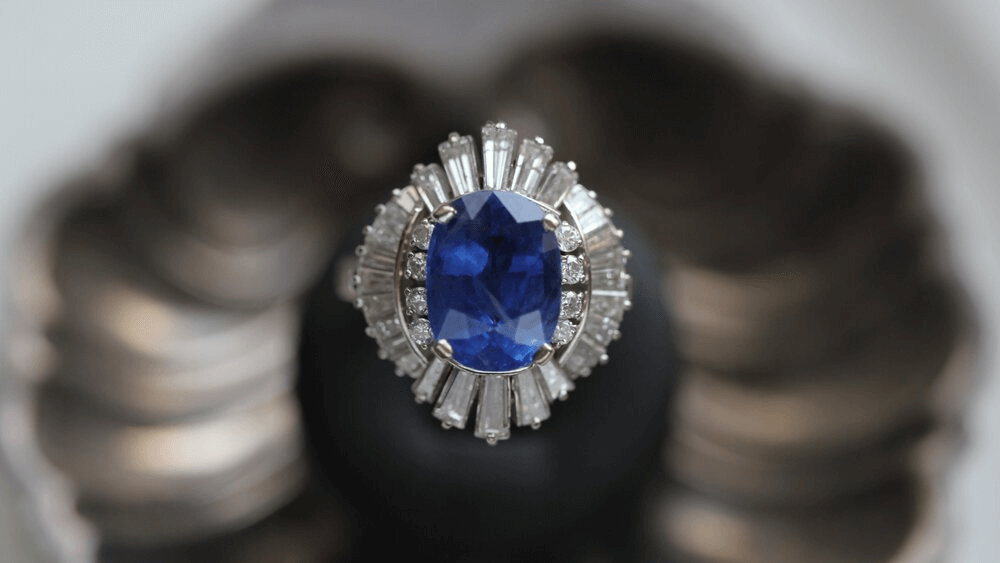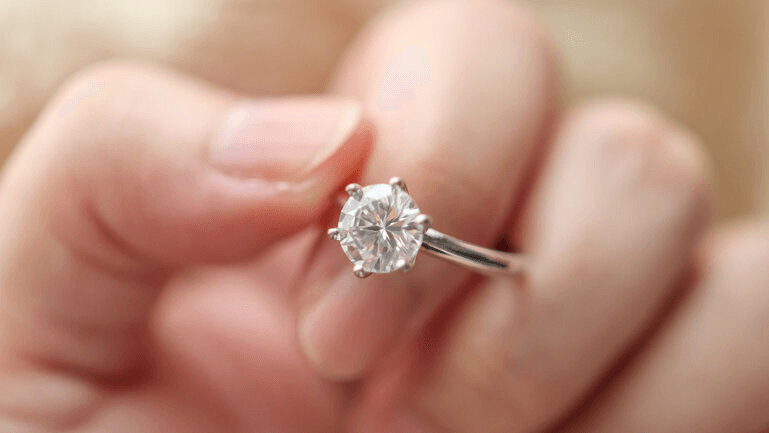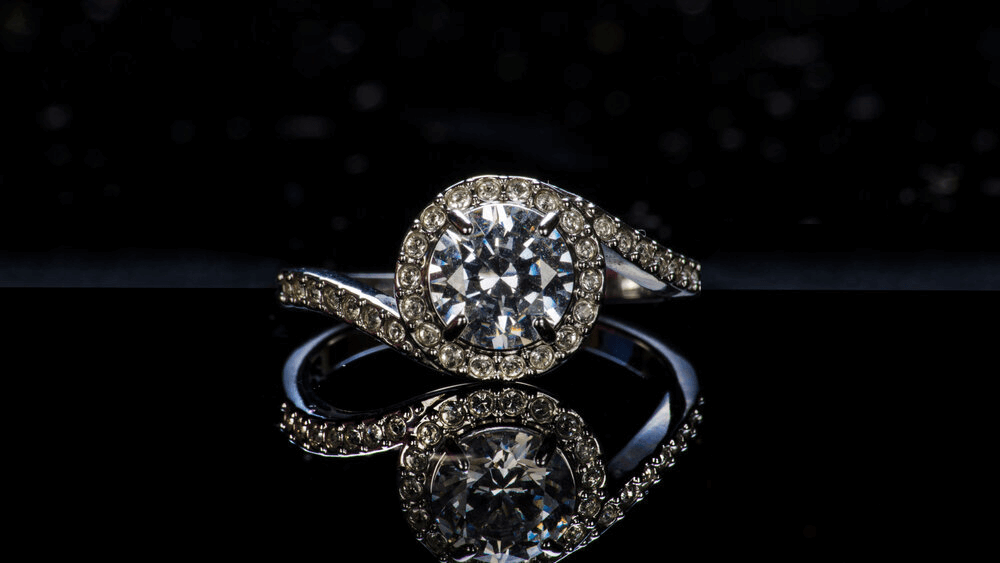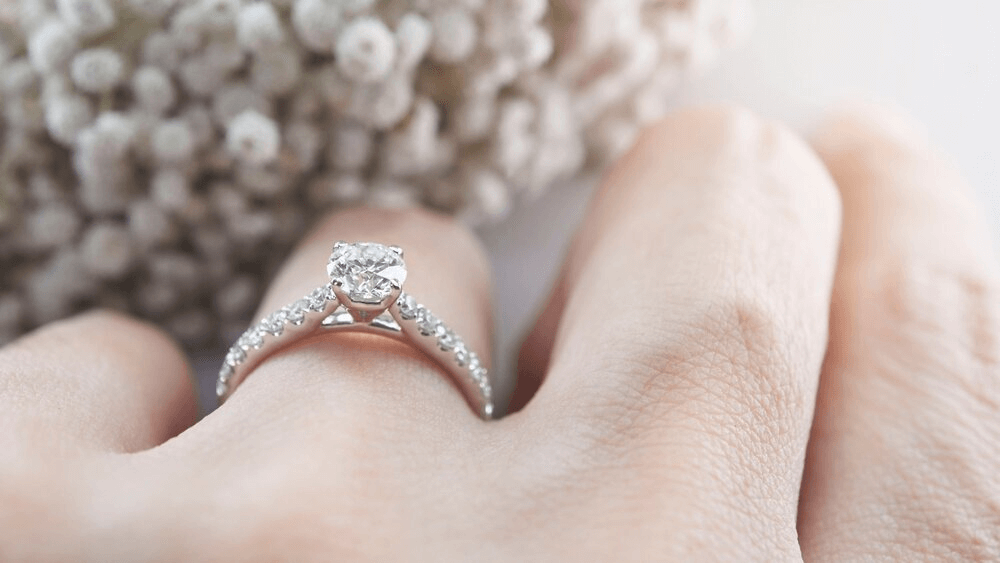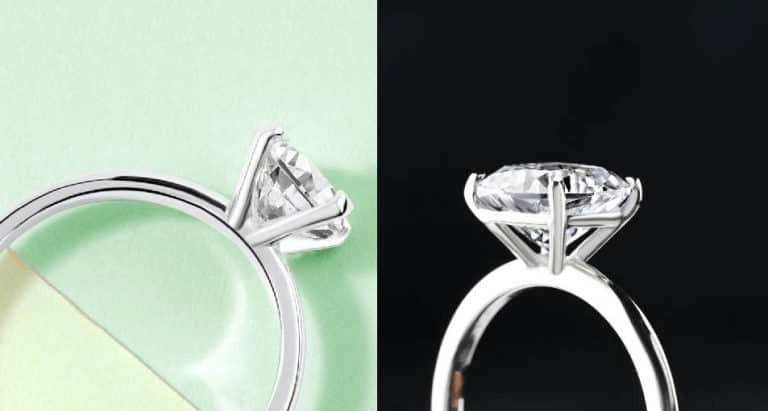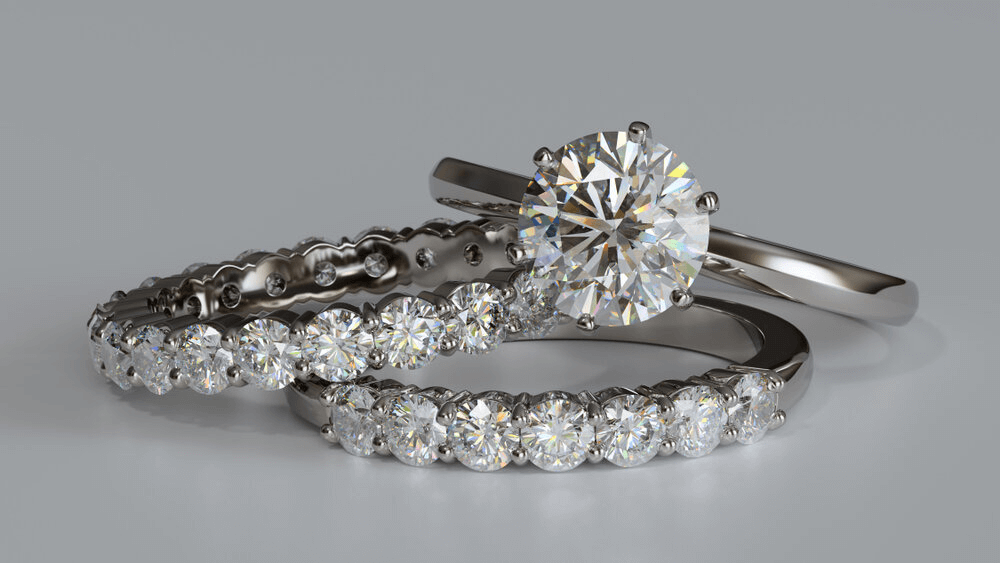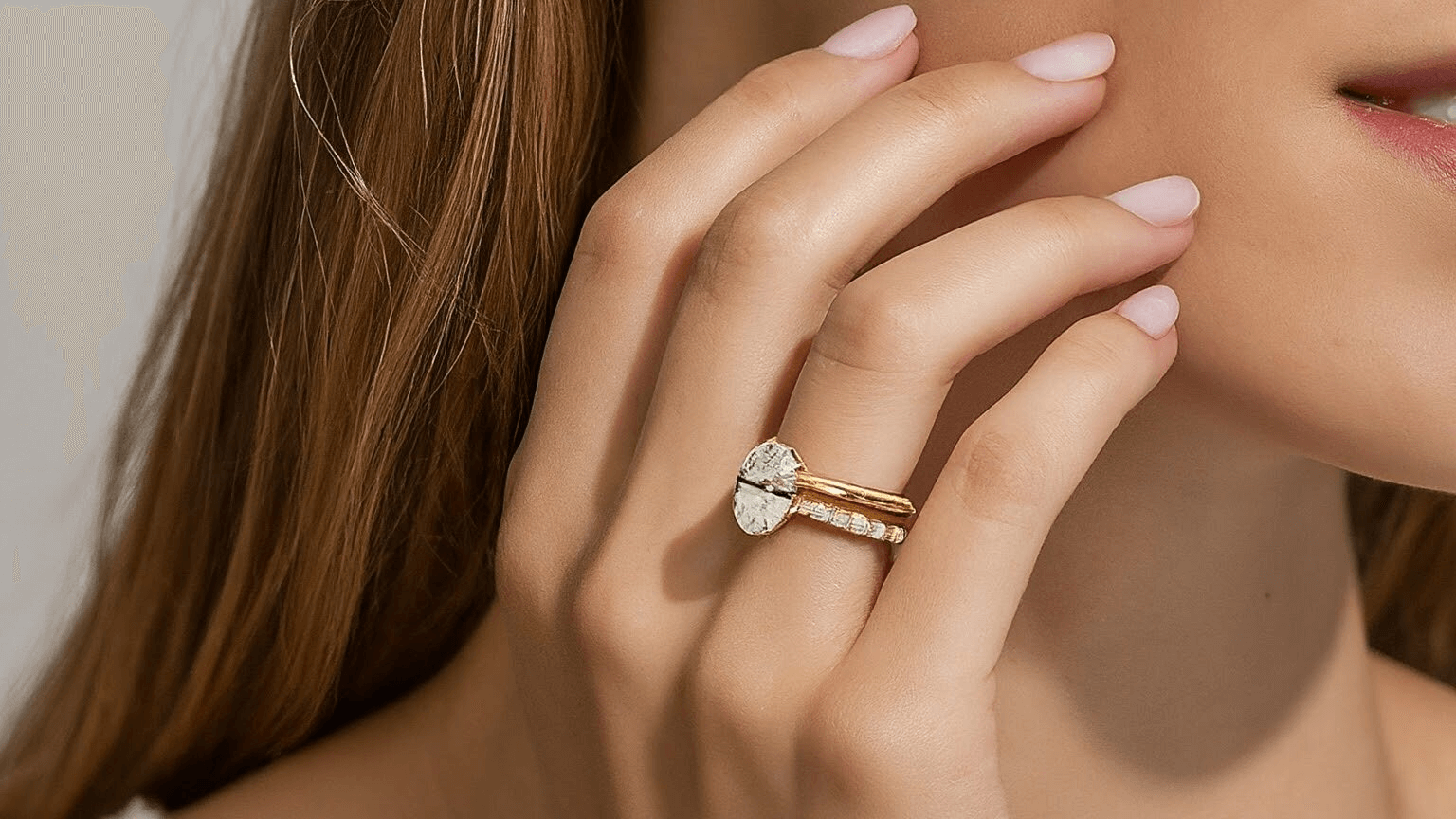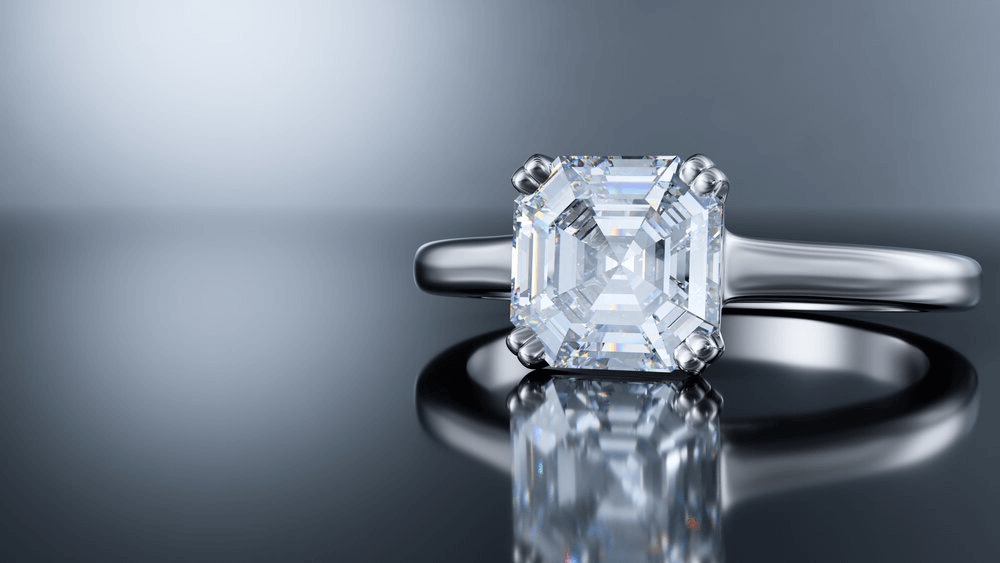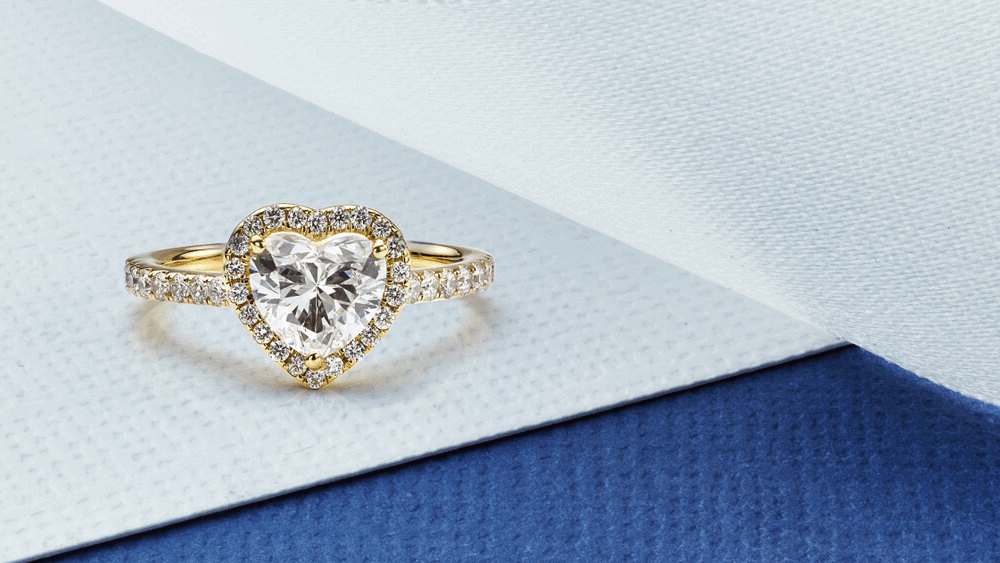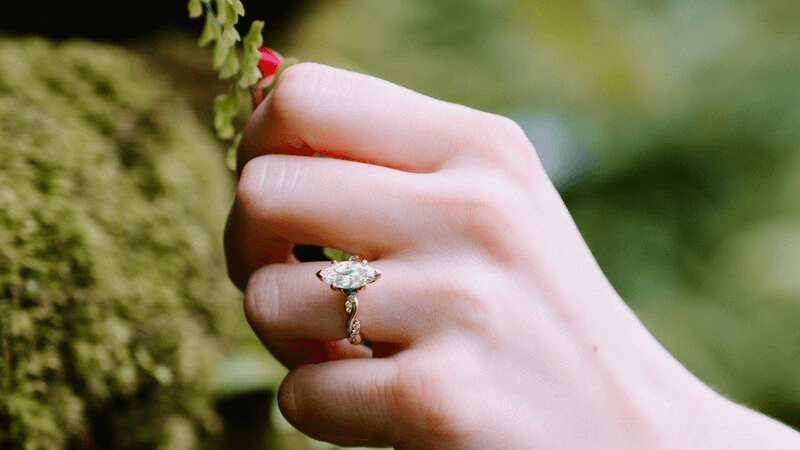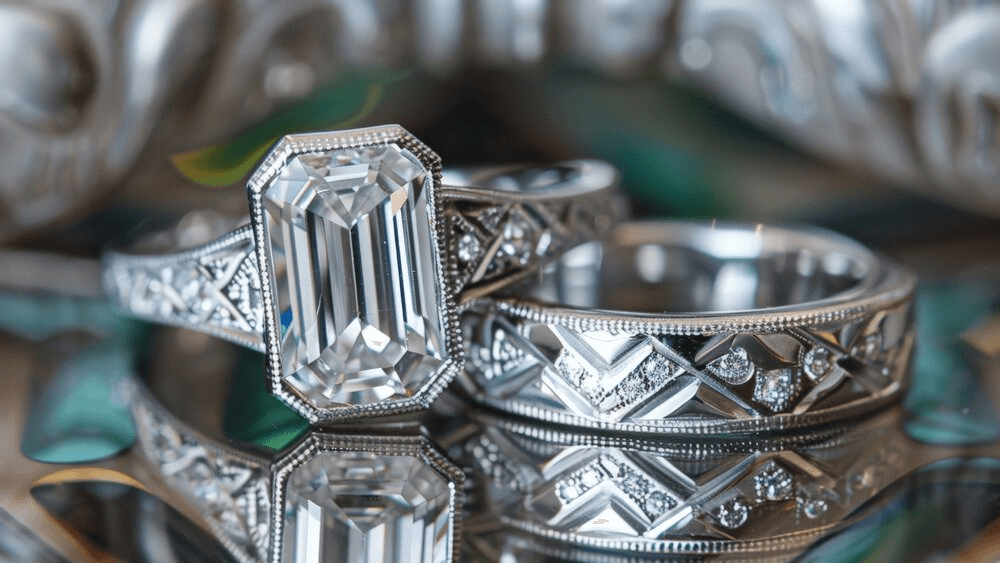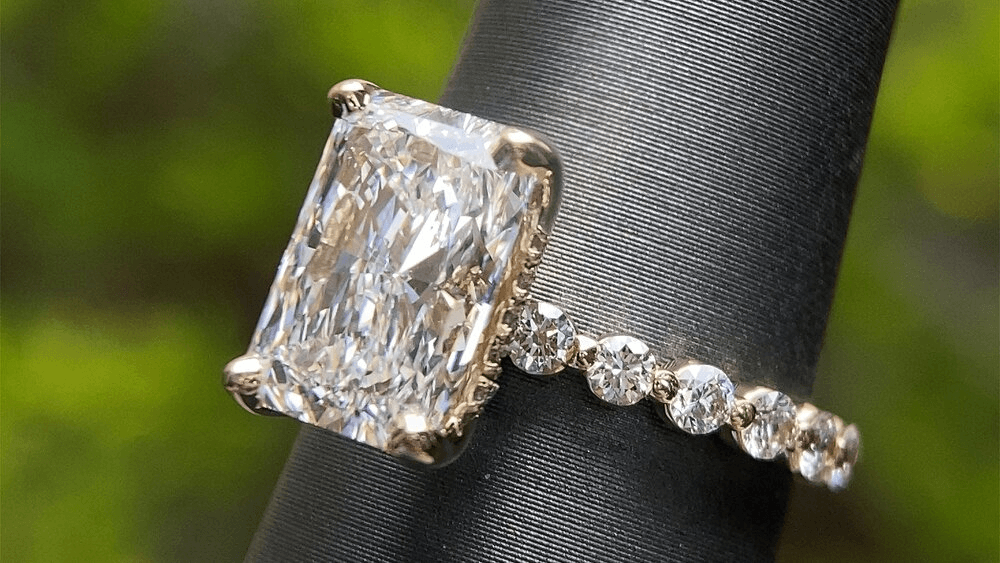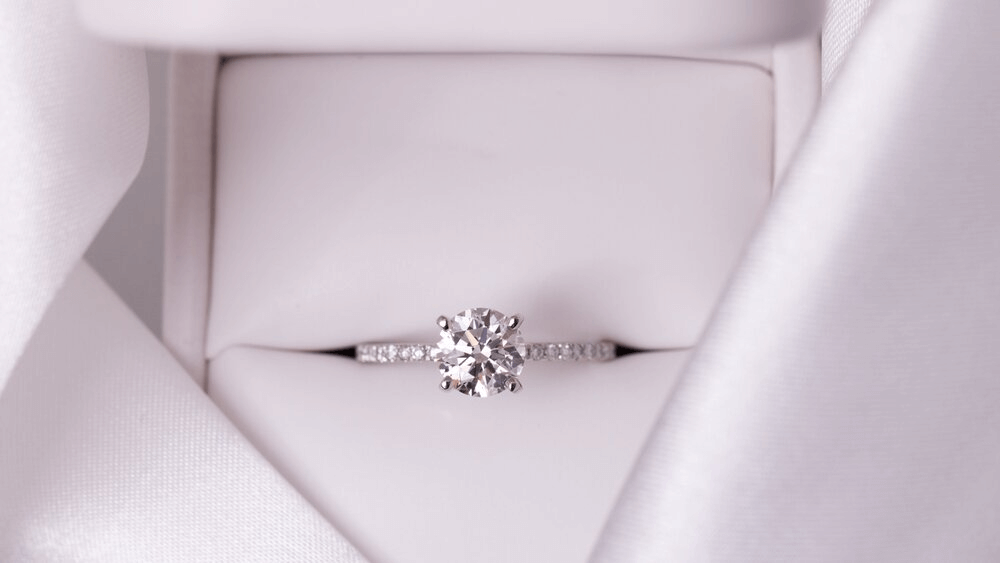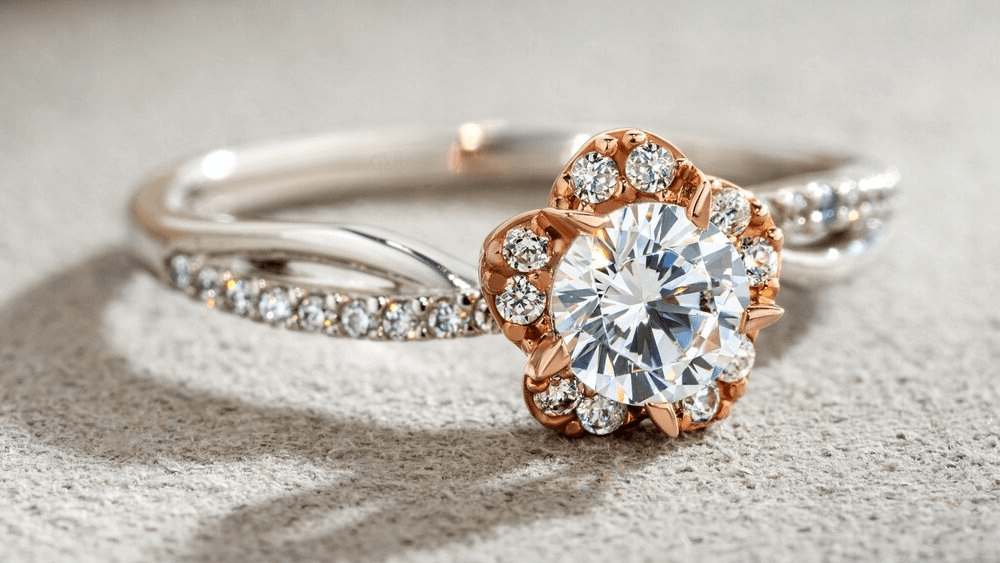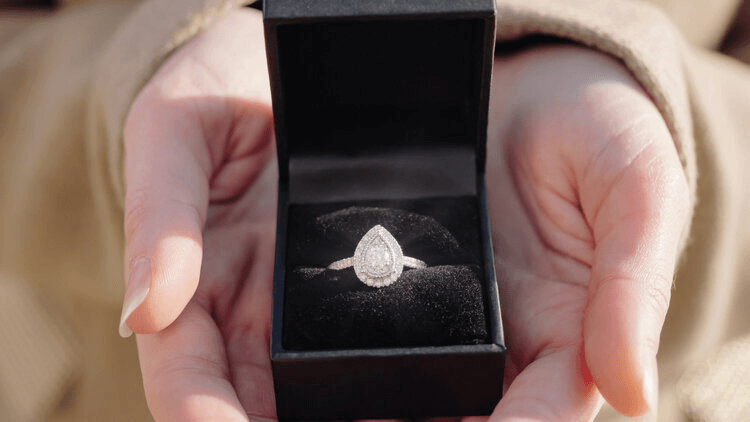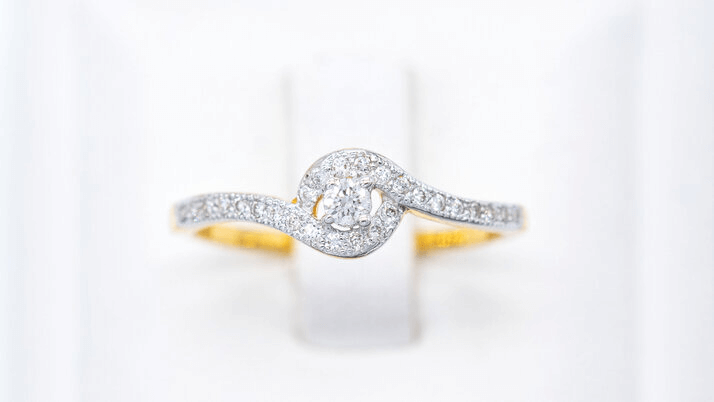The Floating Diamond Engagement Ring Guide

By Gary A.

Edited by Olivia H.
Published Mar 17, 2022
Edited on Dec 18, 2024
A floating diamond engagement ring offers a captivating design where the diamond appears to hover effortlessly, creating a modern, elegant statement for those who want something truly unique.

- 7 Quick Tips for Buying and Examining a Floating Diamond Engagement Ring
- Introduction to Floating Diamond Engagement Rings
- What Does a Floating Diamond Look Like?
- How Floating Diamond Rings Work
- Addressing Durability and Daily Wear
- Maintaining Your Floating Diamond Engagement Ring
- Our Expert Take
- 10 FAQs
Before we dive deeper into the specifics, here are some practical tips to help guide your decision-making process:
7 Quick Tips for Buying and Examining a Floating Diamond Engagement Ring
- Tip 1:Understanding the Floating Setting Design: Familiarize yourself with the unique characteristics of floating settings. This involves how the diamond is mounted to give the illusion of it hovering or floating. Knowing the specifics will help you appreciate the craftsmanship and evaluate if the design aligns with your preferences.
- Tip 2:Check the Security of the Diamond: Inspect how securely the diamond is held in the floating setting. As these designs often expose more of the diamond, ensuring that it is securely held is paramount. Gently touch and test if the diamond wobbles or seems loosely attached.
- Tip 3:Assess the Metal Quality and Craftsmanship: Evaluate the quality of the metal used in the ring setting. The strength and durability of the band are crucial, especially in floating designs where the diamond may be more exposed. High-quality metals like platinum or high-grade gold can offer better support and longevity.
- Tip 4:Consider Lifestyle Compatibility: Reflect on how the ring fits with your daily activities. Floating diamond engagement rings can be more prone to catching on fabrics or getting knocked due to their design. Consider if the ring’s style suits your everyday life, including work and hobbies.
- Tip 5:Inspect for Symmetry and Alignment: Look for symmetry in the setting, especially if the ring features additional stones or intricate design elements. Asymmetry can indicate poor craftsmanship, which might affect the ring’s durability and overall appearance.
- Tip 6:Review the Clarity and Cut of the Diamond: Pay close attention to the clarity and cut of the diamond. In floating settings, more of the diamond is visible, making its quality and cut even more critical. Imperfections or a poor cut are more noticeable in such an exposed setting.
- Tip 7:Analyze Light Performance and Sparkle: Observe how light interacts with the diamond. Floating settings can enhance the stone’s brilliance and fire by allowing more light to enter. Ensure that the diamond displays a balanced and vibrant sparkle under different lighting conditions.
Now that you’ve got these practical tips, use Jeweler AI below to find the perfect engagement ring that suits your style and budget:
Introduction to Floating Diamond Engagement Rings
The architectural elements of a ring are often part of the appeal. From the elegant structure of a Cathedral to the delicacy of the prongs – seemingly as delicate as a drop of water – the details beyond the diamond are captivating in their own right.
Even so, they are always secondary to the diamond. Our eye is caught by the brilliance and fire – the bright shine and the perfect shape – before anything else, and it seems safe to say that most shoppers want to be able to keep as much of the diamond untouched by structural elements as possible, without risking it falling out. Prongs are there for a reason, after all.
That’s why the floating diamond design represents the ‘final frontier’ in ring design. As much as possible, the jeweler works to eliminate excess metalwork, and conceal the parts that are absolutely essential – and believe us when we say that it takes a lot of creativity and expertise to make a diamond appear capable of defying gravity.
Done right, the results are truly spectacular – and, if you can believe it, perfectly safe for your diamond.
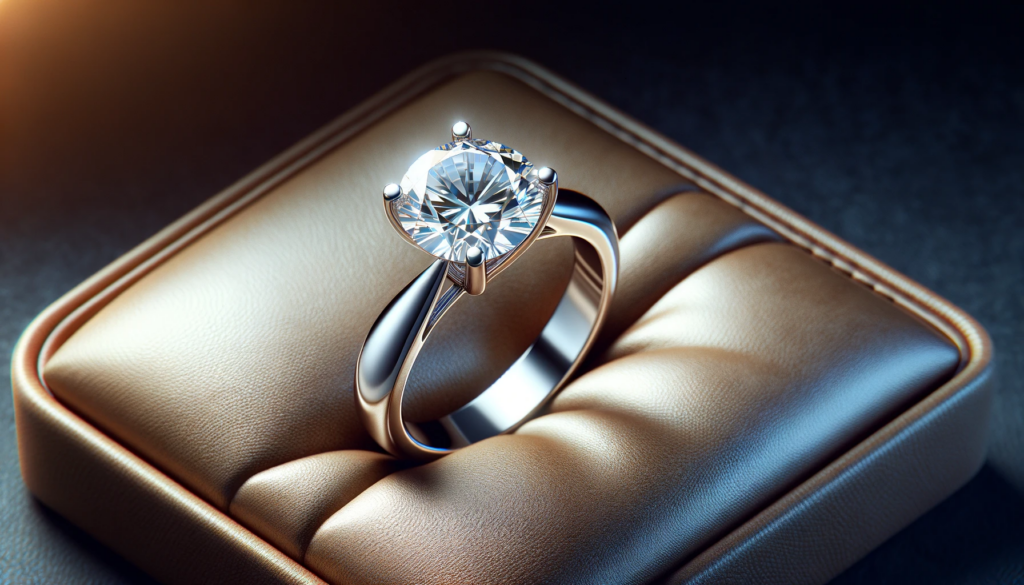
What Does a Floating Diamond Look Like?
It really does appear to be hovering above the shank – and above the wearer’s finger.
Compared with other, more traditional ring settings, much more of the diamond is exposed – particularly the sides – meaning the wearer can appreciate every aspect of the stone. It’s a great way to show off an excellent diamond cut, and the silhouette of your chosen shape.
Floating diamond engagement rings can follow many different designs. The diamond might be positioned alongside the shank – held in place by well-disguised metalwork, the stone will appear to skim the edge of the band, making minimal contact.
One of the most common designs shares similarities with the tension setting, which appears to graze the edges of the diamond, rather than clamping it in place with a great deal of force.
The open bezel is also a popular technique for floating a diamond. Rather than encircling the diamond, the bezel wraps around little more than half. A single prong might be used to secure the ‘open’ portion, creating the illusion that the diamond could break free at any moment.
Floating halo engagement rings are also a popular style. Instead of encircling the edge of the diamond, where the crown meets the girdle, the halo sits lower than the diamond and, as a result, the diamond appears to be rising up from the ring’s center, away from the finger and into the airspace above.
In any case, these rings are united by a mastery of ring design, and a near-magical touch that almost appears to make the metalwork redundant. They make the most of the diamond from every angle and maximize sparkle by giving the stone as much access to the light as possible.
How Floating Diamond Rings Work
While it depends on the ring’s other design elements, floating diamonds are generally secured in place using tension, open bezels, or bars that create a very fine lip over the edge of the diamond.
Jewelers can also create a special kind of split shank design known as a bypass, where the two (unconnected) ends of the shank run on either side of the diamond without ever meeting. They can hold the diamond in place using tension, or by creating a barely noticeable channel that prevents the diamond from moving or slipping out of place.
It’s often easier to create the illusion of a floating diamond in white gold or platinum settings, since any lips or tiny prongs are far less likely to prove noticeable if their color blends with the white shine of the diamond.
The contrast of yellow and rose gold will mean that any minor overlaps between the diamond and metal will be emphasized.
Of course, this is only useful for white diamonds. For colored diamonds, achieving this effect is a little more challenging.
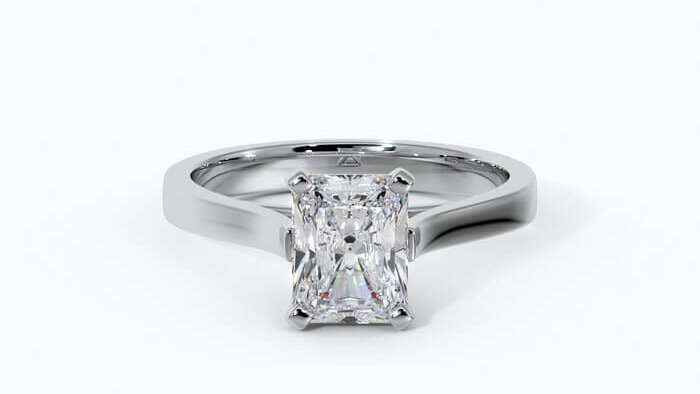
Addressing Durability and Daily Wear
It’s possible that a hard knock could undermine the metalwork, but this is true of any ring design (save for a bezel, which is about as safe as they come). A well-made floating diamond ring will be very secure.
It’s likely that a floating diamond will be a little more vulnerable to working loose or falling out than a regular four- or six-prong ring, but they are a lot more secure than they appear.
The mark of a beautifully made floating diamond ring is its ability to fool you into thinking that it’s held in by a feather-touch, and sheer willpower. It takes an element of bravery to wear a ring that appears so fragile, but, provided it has been made by a skilled jeweler, it’s definitely a lot stronger than you think.
Remember that a floating diamond is more vulnerable to being knocked. If the diamond’s girdle is too thin, or any delicate points are left exposed, there is a definite risk of them chipping. It’s important that you keep this in mind but remember that a good jeweler will talk you through everything – and will strongly advise you away from any diamonds that aren’t up to the job.
Snagging
If they are set high above the rest of the ring, then they are a lot more likely to snag and may not be easy or convenient to wear if you lead a busy lifestyle.
Most engagement rings will snag initially. It takes some time for the wearer to get used to having it on their finger, and the first couple weeks will probably be a learning curve – even if they’re used to wearing rings.
But, as you can imagine, the higher or bulkier a ring is, the more likely it is to snag on clothing. Bulkier settings like halos are often guilty of this, as well as solitaires holding diamond shapes with sharper points like the Princess cut (with its four angular corners) or the Pear (with its distinctive point).
Maintaining Your Floating Diamond Engagement Ring
Over time, snagging can work the setting loose and put your diamond at risk, so, as always, it is very important that you pay regular visits to the jeweler who made the ring. That way, they can clean and inspect the ring for anything that may need a quick tune-up, and you can worry less about the longevity of your floating diamond.
Our Expert Take
The floating diamond is a perfect example of a jeweler’s skill – their ability to keep their work ‘behind the scenes’, and to create something that seems to work against the laws of nature. They are also the ideal way to show off a beautiful diamond from every angle and avoid the setbacks of, say, a bezel or halo engagement ring, which tends to obscure most of the lower portion of the diamond from view.
These rings are secure, but they’re often a little more daunting to wear – and, at times, harder to get used to – than some of the more popular ring styles. We’re not saying that the intended wearer won’t get used to wearing a floating diamond engagement ring, but that you’ll want to think about how comfortable it will be to wear on an average day.
Once you nail down the specifics of the design, however, you’ll see how strong a choice a floating diamond engagement ring can be. Stripping back the metalwork to the bare necessities is the best way to celebrate the full, 360° beauty of your diamond, and avoid losing any of it to the architecture of the ring itself.
As always, you’ll want to work with a jeweler who has truly mastered the art of creating exquisite engagement rings. Experience goes a long way to expressing the credentials and expertise a jewelry has. This is exactly what we offer our customers – knowledge, guidance, and creativity for making a vision into a reality.
10 FAQs
- Q: What Is a Floating Diamond Engagement Ring?
- A: A floating diamond engagement ring features a design where the diamond appears to hover or ‘float’ above the band without visible prongs or metal holding it, creating a striking, modern look.
- Q: How Secure Is a Floating Diamond Setting?
- A: When crafted by skilled jewelers, floating diamond settings are quite secure. However, the diamond’s exposure in this setting demands extra care to avoid impacts or snagging.
- Q: Can Floating Diamond Rings be Resized?
- A: Yes, most floating diamond rings can be resized. However, the process can be more complex than traditional rings, depending on the specific setting style.
- Q: Are Floating Diamond Rings Suitable for Everyday Wear?
- A: While they are suitable for daily wear, their unique design requires more cautious handling compared to more traditional settings, especially in active lifestyles.
- Q: Do Floating Diamond Rings Require Special Care?
- A: Yes, they may require more frequent cleaning and careful handling to maintain their appearance and prevent damage due to the exposed setting.
- Q: Can I Set Any Diamond Shape in a Floating Setting?
- A: Most diamond shapes can be set in a floating design, but round, oval, and princess cuts are particularly popular for their ability to enhance the floating illusion.
- Q: Are Floating Diamond Rings More Expensive?
- A: The price can vary, but floating diamond rings can be more expensive due to the complexity and craftsmanship involved in creating the floating illusion.
- Q: Can Floating Settings Feature Colored Gemstones?
- A: Absolutely. Colored gemstones like sapphires, rubies, and emeralds can also be set in floating designs, offering a unique and colorful alternative to diamonds.
- Q: How Does Lighting Affect Floating Diamond Rings?
- A: Floating settings can enhance a diamond’s brilliance and fire, as more light can interact with the stone from different angles, creating a more vibrant sparkle.
- Q: Is a Floating Diamond Setting Right for Me?
- A: If you appreciate modern, unique jewelry and are willing to provide the extra care required, a floating diamond ring can be a stunning choice that stands out for its beauty and design innovation.
Explore the world of floating diamond engagement rings with Jeweler AI. Experience elegance refined with personalized, expert selections.
FOLLOW-UP GUIDE SERIES





